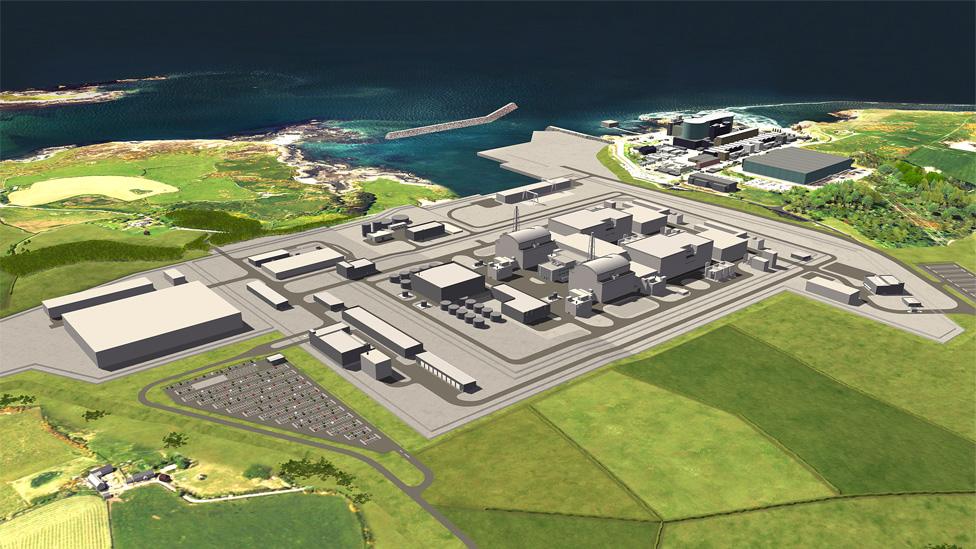Government U-turn on nuclear deal
- Published
- comments

Wylfa Newydd would operate for 60 years if a permit is granted for its operation
The government has confirmed it is considering putting taxpayers' money into a project to build a new nuclear power station at Wylfa in North Wales.
It's a decision that, if taken (and it almost certainly will be), will mark a significant U-turn in the government's approach to procuring new nuclear power.
In 2010, the government was adamant that the UK public should never have to run the risk of lengthy and costly overruns that have become a hallmark of nuclear plant construction.
In the case of Hinkley Point C in Somerset, the government made much of the fact that come what may, the UK taxpayer would be insulated from the skyrocketing costs that the contractor, EDF, had incurred on a similar plant in France.
But there was a price to pay for that taxpayer protection: very expensive electricity.
In return for shouldering all the risk, EDF demanded a price for the electricity that Hinkley will (one day) produce that is double the current going rate.
The National Audit Office and the Public Accounts Committee were critical of that deal and there was considerable pressure to significantly reduce the cost of power from the Wylfa plant. It's expected it will come in around £77 per megawatt hour, compared to £92.50/MWh for Hinkley.
Cheaper borrowing
Energy Secretary Greg Clark told the BBC: "We listened to the NAO and PAC and thought it appropriate to explore a different way to deliver a project of this size."
Environmental groups condemned the deal. The Greens' Caroline Lucas said: "Taking a stake in this nuclear monstrosity would see taxpayers locked into the project and paying out for a form of electricity generation that's not fit for the future."
However, Dieter Helm, professor of Energy Policy at the University of Oxford, told the BBC that the government shift made sense.
"The sheer cost of building new nuclear power stations means it makes sense for the government to help finance projects like this," he said.
"Governments can borrow much more cheaply that private companies and that lower cost of borrowing can drastically reduce the ultimate cost. Hinkley Point C would have been roughly half the cost if the government had been borrowing the money to build it at 2%, rather than EDF's cost of capital, which was 9%."
There is another reason why the government feels more comfortable taking a construction risk this time around. The Hinkley Point Project is based on a brand new reactor design which is yet to go into service anywhere in the world. By contrast, the Hitachi design is relatively tried and tested.
Whatever the merits of the new approach, or the old design, the government can be sure to face tough questions as to why new nuclear construction is worth spending billions on when there are so many other calls on the Treasury coffers.
- Published4 June 2018
